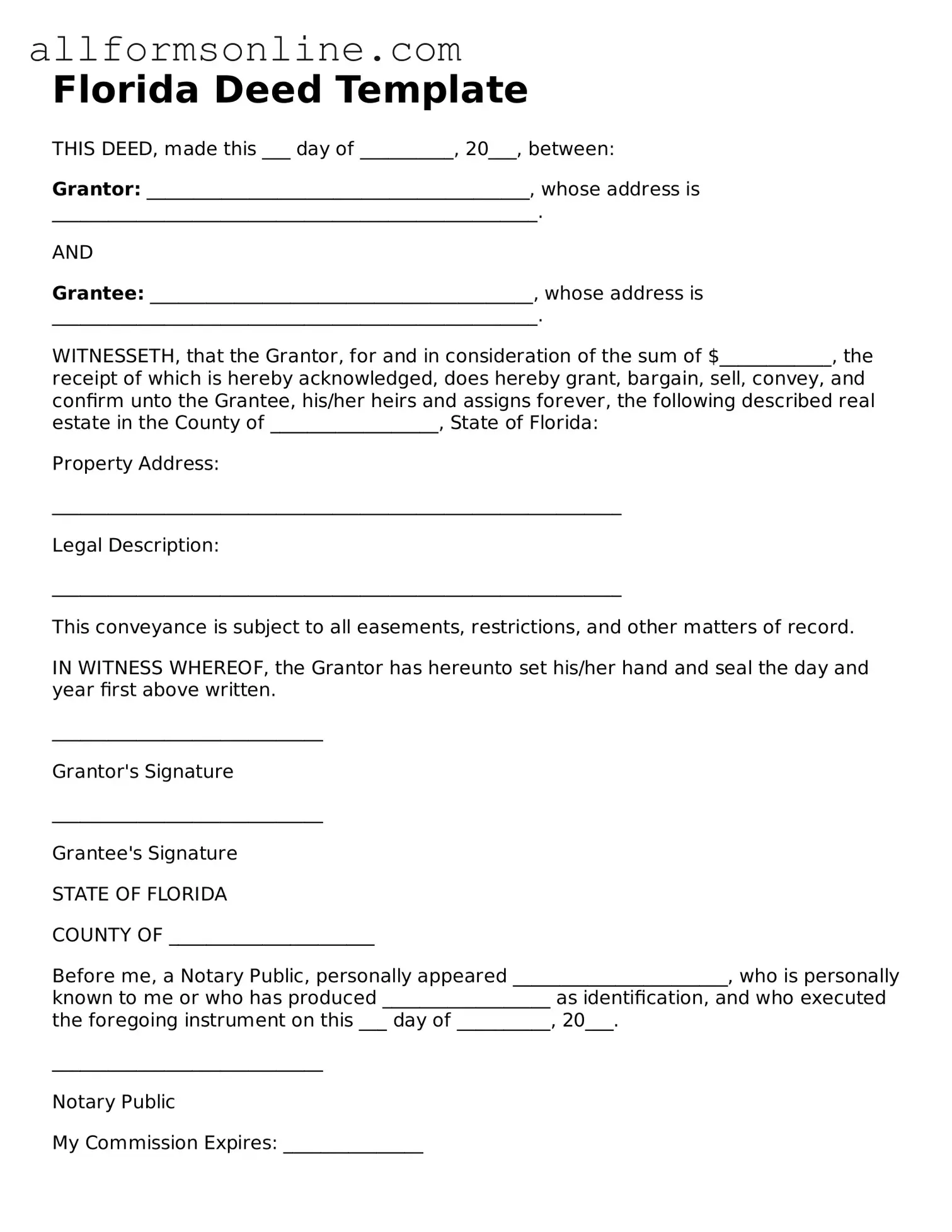What is a Florida Deed form?
A Florida Deed form is a legal document used to transfer ownership of real property in the state of Florida. It outlines the details of the transaction, including the names of the parties involved, a description of the property, and any conditions or restrictions related to the transfer. Various types of deeds exist, such as warranty deeds and quitclaim deeds, each serving different purposes in property transactions.
Who needs to use a Florida Deed form?
Anyone involved in the sale, transfer, or donation of real estate in Florida will need to use a Florida Deed form. This includes property owners selling their property, individuals gifting property to family members, or entities transferring property as part of a business transaction. It is essential for the deed to be properly executed to ensure the transfer is legally recognized.
How do I complete a Florida Deed form?
To complete a Florida Deed form, gather the necessary information, including the names of the grantor (seller) and grantee (buyer), a legal description of the property, and any applicable terms of the transfer. Fill out the form accurately, ensuring all required fields are completed. Afterward, the deed must be signed by the grantor in the presence of a notary public. Some forms may also require witnesses, depending on the type of deed.
Where do I file a Florida Deed form?
A Florida Deed form must be filed with the county clerk’s office in the county where the property is located. It is important to file the deed after it has been signed and notarized to make the transfer official. There may be a filing fee, so it is advisable to check with the local clerk’s office for specific requirements and costs associated with filing.
What happens if a Florida Deed form is not properly executed?
If a Florida Deed form is not properly executed, the transfer of property may be deemed invalid. This can lead to disputes over ownership and may complicate future transactions involving the property. To avoid issues, it is crucial to ensure that the deed is completed accurately, signed, and notarized according to state requirements.
